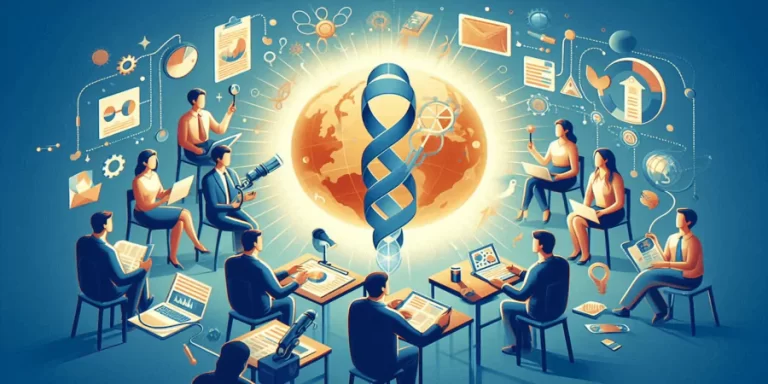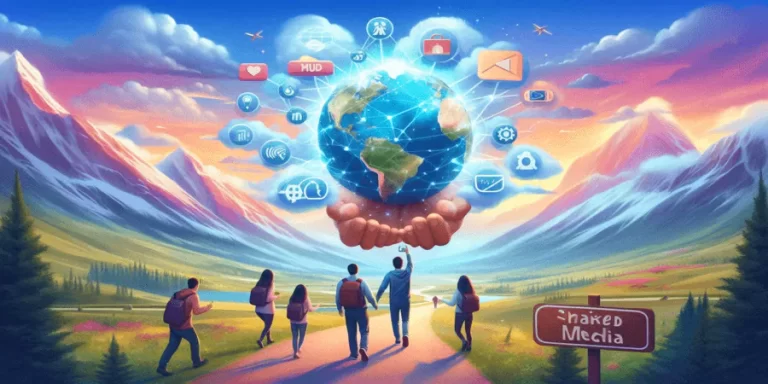Generative AI is revolutionizing various industries, and public relations (PR) and communications are no exception. With its ability to create content, analyze data, and predict trends, generative AI is becoming increasingly prevalent in the PR and communications landscape. This article explores how generative AI is being used in PR and communications, its benefits, and the potential challenges it poses.
Understanding Generative AI
Generative AI refers to algorithms capable of generating new content based on patterns and data they have learned. This includes creating text, images, audio, and video content. In PR and communications, generative AI can produce press releases, social media posts, blog articles, and more, often with minimal human intervention.
The Prevalence of Generative AI in PR and Communications
Generative AI is becoming more widespread in PR and communications for several reasons:
- Content Creation: AI tools like OpenAI’s GPT-4 can generate high-quality written content quickly and efficiently. PR professionals use these tools to draft press releases, social media updates, newsletters, and blog posts, saving time and ensuring consistency in messaging.
- Data Analysis and Insights: Generative AI can analyze vast amounts of data to provide insights into media trends, audience behavior, and campaign performance. This helps PR professionals make data-driven decisions and tailor their strategies to achieve better results.
- Media Monitoring: AI-powered tools can monitor media coverage and social media conversations in real-time. They can identify relevant mentions, track sentiment, and even predict potential PR crises, enabling proactive management.
- Personalization: Generative AI can create personalized content for different segments of an audience. By analyzing user data, AI can generate tailored messages that resonate more effectively with specific groups, enhancing engagement and relevance.
- Crisis Management: In times of crisis, speed and accuracy are crucial. Generative AI can quickly draft statements and responses, ensuring timely and appropriate communication. It can also simulate potential crisis scenarios to help PR teams prepare and respond effectively.
Benefits of Generative AI in PR and Communications
The integration of generative AI in PR and communications offers numerous benefits:
- Efficiency and Productivity: AI can automate repetitive tasks, freeing up PR professionals to focus on strategic activities. This increases productivity and allows teams to manage larger volumes of work without compromising quality.
- Consistency: Generative AI ensures consistency in messaging across different platforms and content types. This helps maintain a cohesive brand voice and strengthens brand identity.
- Data-Driven Decisions: AI’s ability to analyze data and provide actionable insights helps PR professionals make informed decisions. This leads to more effective campaigns and better allocation of resources.
- Scalability: Generative AI enables PR teams to scale their efforts without significantly increasing costs. Whether it’s creating content or analyzing data, AI can handle large volumes efficiently.
- Real-Time Adaptation: AI can respond to changing circumstances in real-time. Whether it’s a sudden crisis or a trending topic, AI can quickly generate appropriate content and recommendations, ensuring timely and relevant communication.
Challenges and Considerations
While the benefits of generative AI in PR and communications are substantial, there are also challenges and considerations to keep in mind:
- Quality Control: Ensuring the quality and accuracy of AI-generated content is crucial. While AI can produce high-quality content, it still requires human oversight to catch errors, ensure relevance, and maintain the brand’s tone and voice.
- Ethical Concerns: The use of AI raises ethical questions, particularly regarding transparency and authenticity. It’s important for organizations to disclose when content is AI-generated and ensure that AI is used responsibly.
- Bias and Fairness: AI systems can inherit biases from the data they are trained on. PR professionals need to be vigilant about potential biases in AI-generated content and strive for fairness and inclusivity.
- Dependence on Technology: Over-reliance on AI can lead to a loss of human touch in communications. It’s important to strike a balance between automation and human creativity and intuition.
- Security and Privacy: The use of AI involves handling large amounts of data, raising concerns about data security and privacy. Organizations must implement robust measures to protect sensitive information.
Examples of Generative AI in Action
- Press Release Automation: Companies like The Associated Press use AI to automate the writing of earnings reports and other news articles. This allows journalists to focus on more complex stories while ensuring timely and accurate reporting.
- Social Media Management: Tools like Sprinklr and Hootsuite integrate AI to schedule and manage social media posts, analyze engagement, and suggest content strategies. This helps PR teams maintain an active and engaging social media presence.
- Media Monitoring and Analysis: AI-powered platforms like Meltwater and Cision provide real-time media monitoring, sentiment analysis, and trend prediction. This helps PR professionals stay on top of media coverage and make informed decisions.
Conclusion
Generative AI is transforming PR and communications, offering numerous benefits from efficiency and scalability to data-driven decision-making. However, it also presents challenges that require careful consideration and responsible use. As AI technology continues to evolve, its prevalence in PR and communications is likely to increase, making it an indispensable tool for modern PR professionals. By leveraging the strengths of generative AI while addressing its challenges, organizations can enhance their communication strategies and achieve greater success in the digital age.





